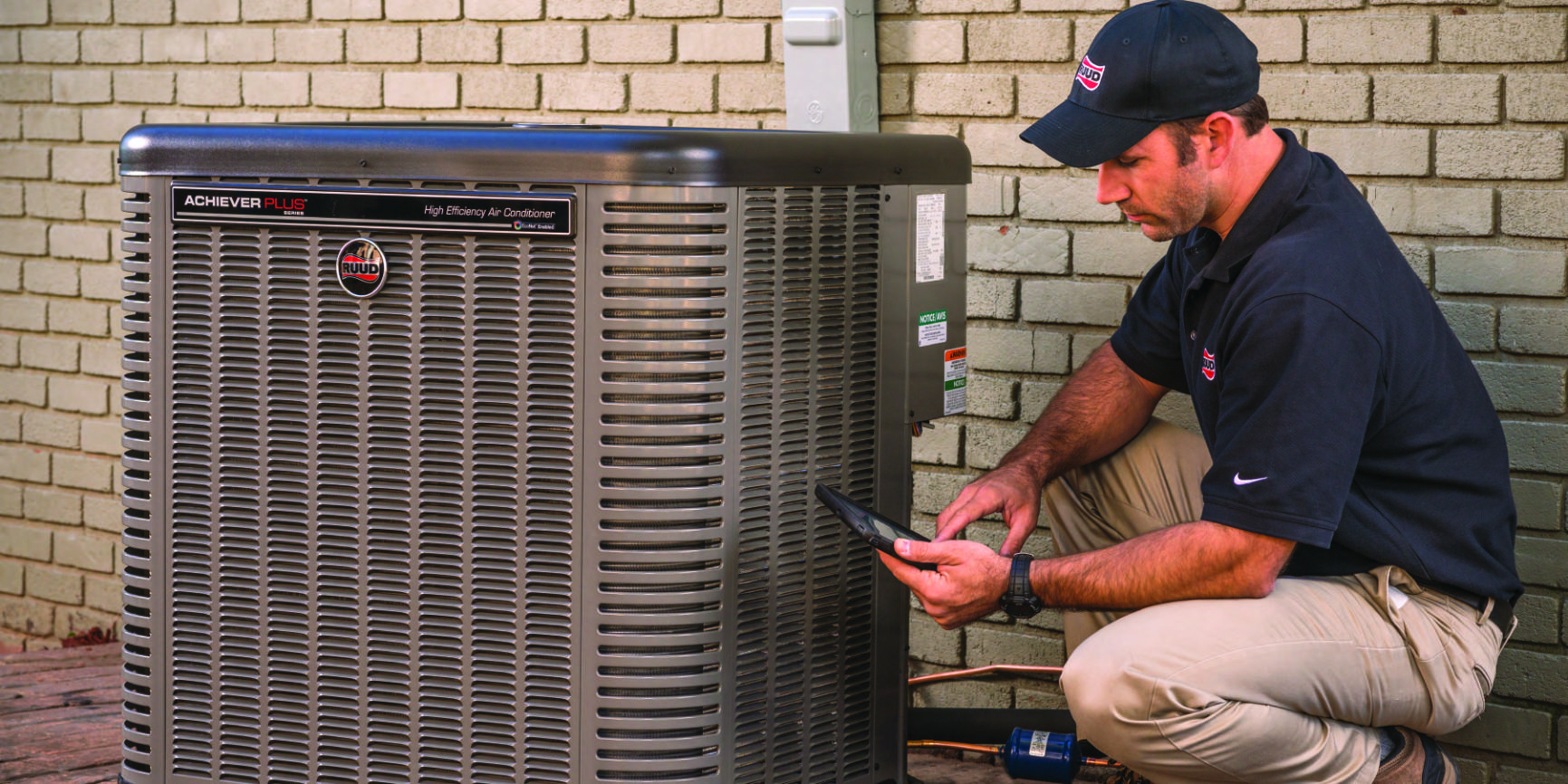
To enjoy the benefits of efficient cooling, it is critical to select an appropriately sized air conditioner for your work or home. The benefits of effective air conditioner (AC) sizing is not just the AC’s ability to cool a desired space and resulting comfort, but also the overall cost savings.
In order to effectively size an air conditioner, you will need to understand:
- Why AC unit sizes matter
- How to size a central AC unit
- How to calculate your cooling needs
- Region, size & space considerations
- AC installation
Why Size Matters
The size of an AC unit refers to its cooling capacity. The larger the cooling capacity, the higher the cost for the equipment. There are many factors which impact the ideal size of your next central air conditioner such as climate, property position, dimensions, insulation and more. With so much to consider, partnering with a local HVAC technician will provide the assurance that your cooling needs will be efficiently met for years to come.
Without a HVAC professional, one of the three following scenarios will occur based on your AC unit selection:
- Oversized AC: The AC won’t run a full cycle and instead will kick on and off constantly because it can cool your home or office too quickly, costing money.
- Undersized AC: The AC will constantly run because it doesn’t have the ability to cool your home or office, costing you money.
- Correct Size: The AC will work efficiently, going through a full cooling cycle and shutting off at the appropriate time, saving you money!
Central AC Unit Sizing
There are two main measurements needed to determine the cooling capacity of your AC unit. These measurements are:
- BTU (British thermal unit): The amount of heat needed to raise the temperature of one pound of water by one degree Fahrenheit.
- Tonnage: A “ton” is a measure of an air conditioner’s ability to cool. One ton is the ability of your air conditioner to cool 12,000 BTUs (British Thermal Unit) in an hour.
How to Calculate Tons & BTUs
- Calculate the square footage of the space you want to cool.
- Divide the space's square footage by 500.
- Multiply the number (from Step 2) by 12,000. This is the number of BTU your system will need to remove to cool the space.
- Add 380 BTU for each person who works in the space all day.
- For each window in the space, add 1,000 BTU. For each kitchen, add 1,200 BTU.
The result of this calculation gives you a rough idea of the minimum BTU of cooling capacity your air conditioner must have. AC units are however rated in tons, so to determine the size of the system you'll need to divide the amount of BTU you need by 12,000.
For example: 100,025 to 125,000 BTU is 8 to 10 tons
AC Unit Sizing Considerations
Once BTUs are determined, HVAC technicians can help identify the exact AC unit needed based on the unique needs of your home. Below explains the importance of each factor, and how they impact recommended BTUs:
Region
Depending on the climate, the required AC tons to cool the area in square feet can vary.
Square Feet
BTUs needed for common residential square footage sizes can vary by region, but generally fall under this range:
House Square Footage | BTUs Needed |
1,000 – 1,200 | 21,000 |
1,200 – 1,400 | 23,000 |
1,400 – 1,500 | 24,000 |
1,500 – 2,000 | 30,000 |
Property Design & Construction
Homes and office features such as insulation, windows or building type can play a role in choosing the right AC unit size. There are many factors you needed to consider when investing into a new unit.
Thankfully HVAC professionals such as Ruud Pro Partners have the experience needed to adjust AC needs based on these factors. Your local HVAC contractor should do a Manual-J for your house and answer any questions about your home. Make sure your HVAC contractor is knowledgeable enough to answer all your questions and concerns.
What's a Manual-J?
It's one of the tools published by the Air Conditioning Contractors of America to help HVAC contractors design a heating and air conditioning system. There are two types of manual-J calculations: a whole house load calculation and a room-by-room load calculation.
Efficiency & Price Considerations
Central AC unit replacements are often done alongside a furnace replacement as well. A complete HVAC replacement will result in a more cost-effective quote compared to separate furnace and AC unit replacements.
Although getting a new AC unit may cost more upfront, it’s important to think of it as a long term investment. Newer units provide lower electricity cost and will pay for themselves within a few years. Benefits of newer units include programmable temperature settings, energy-saving settings and new industry ratings like EER, SEER and ENERGY STAR® certification ratings that you can see upfront before you buy.
These ratings measure a particular unit’s energy efficiency measured in BTUs. EER stands for “energy efficiency rating,” and SEER stands for “seasonal energy efficiency rating”. A higher rating means greater efficiency, and these ratings can be found for both room and central air-conditioners. If you see the blue ENERGY STAR® certification, this means that this particular unit has met or exceeded higher efficiency standards than other similar models.
AC Installation Needs & Next Steps
Based on the unique needs of your home and the region you live in, the ideal air conditioning unit is best determined by a nearby HVAC contractor. Receive an estimate from a dedicated HVAC contractor such as a nearby Ruud Pro Partner who can best advise on the exact central air conditioning unit for you.



